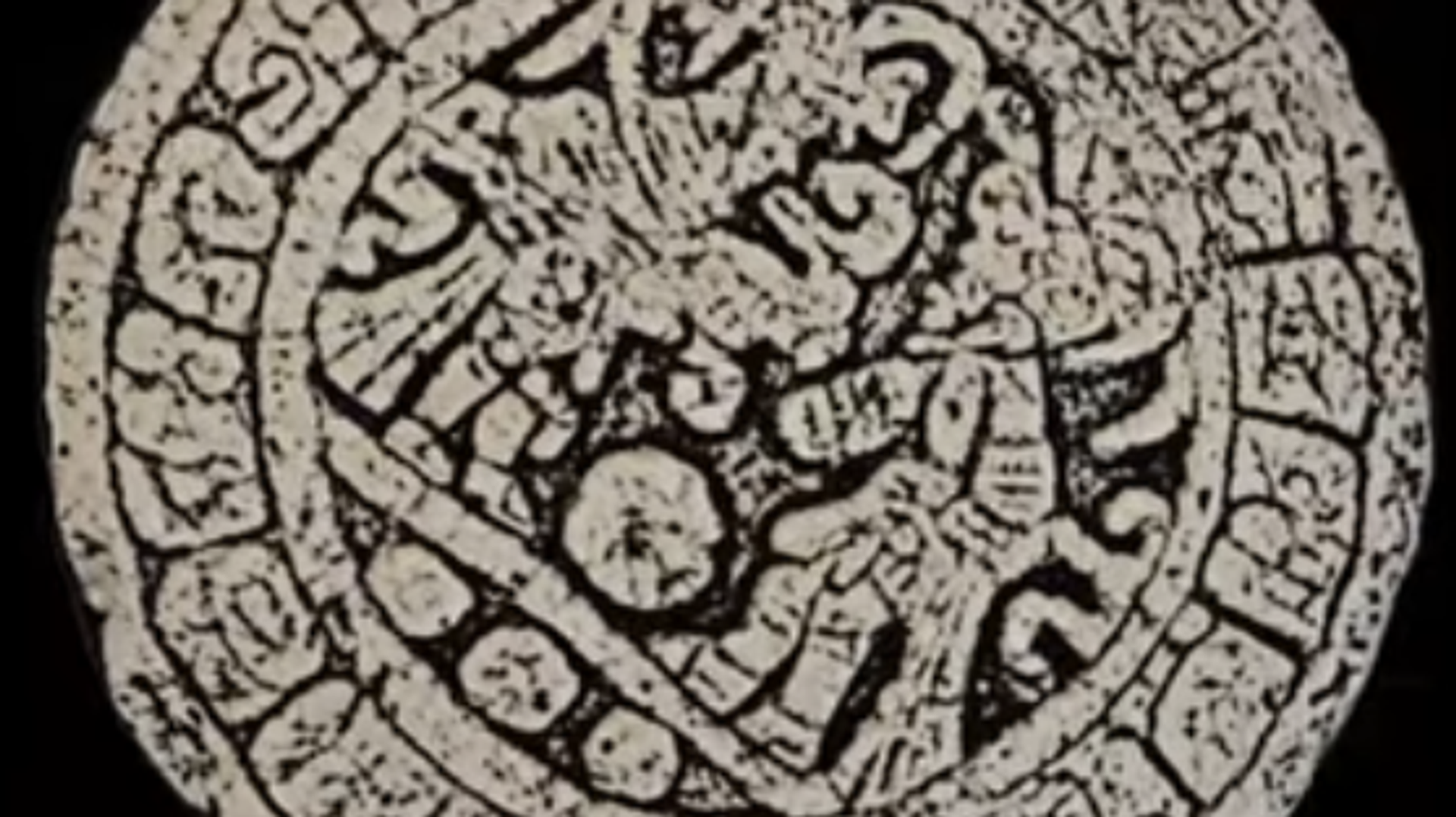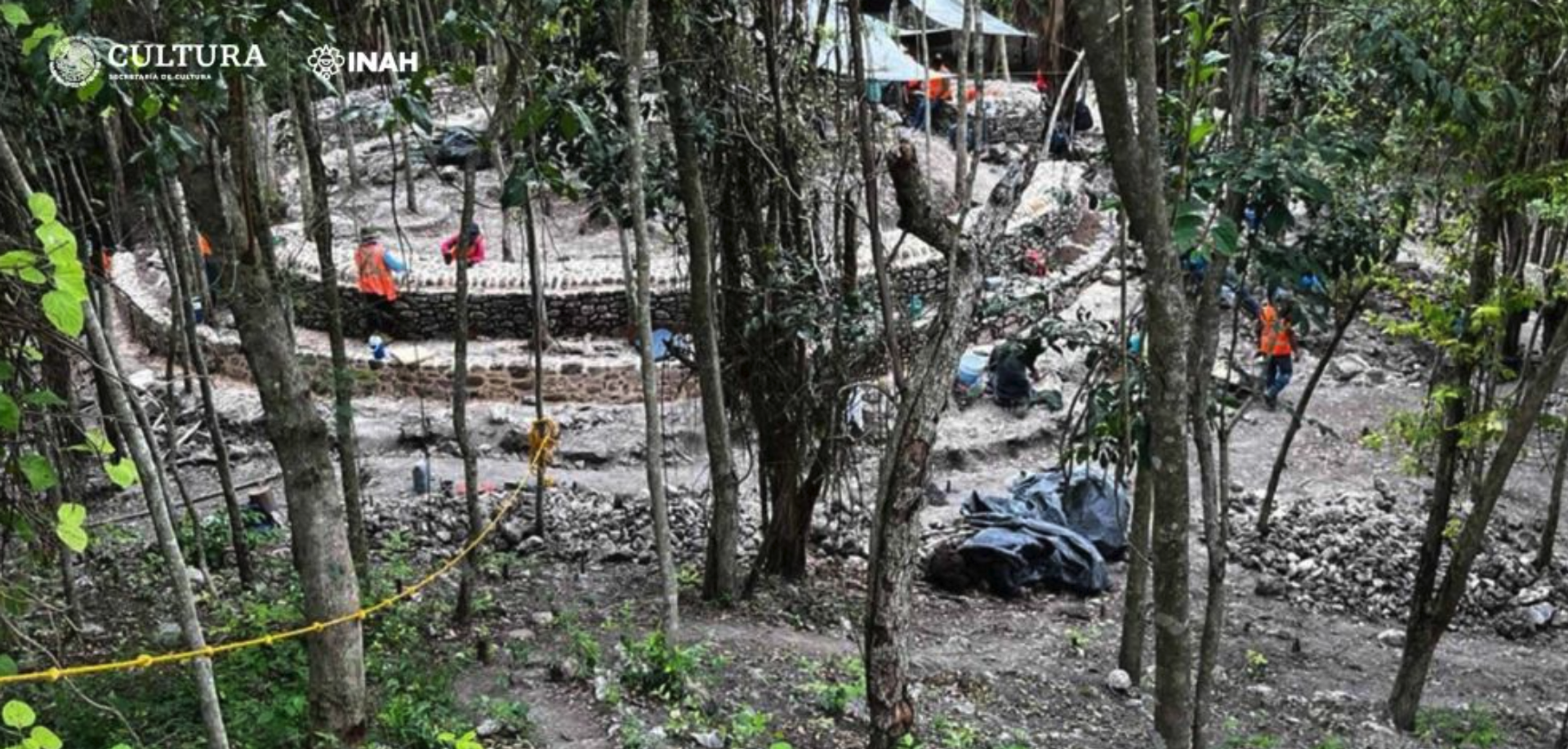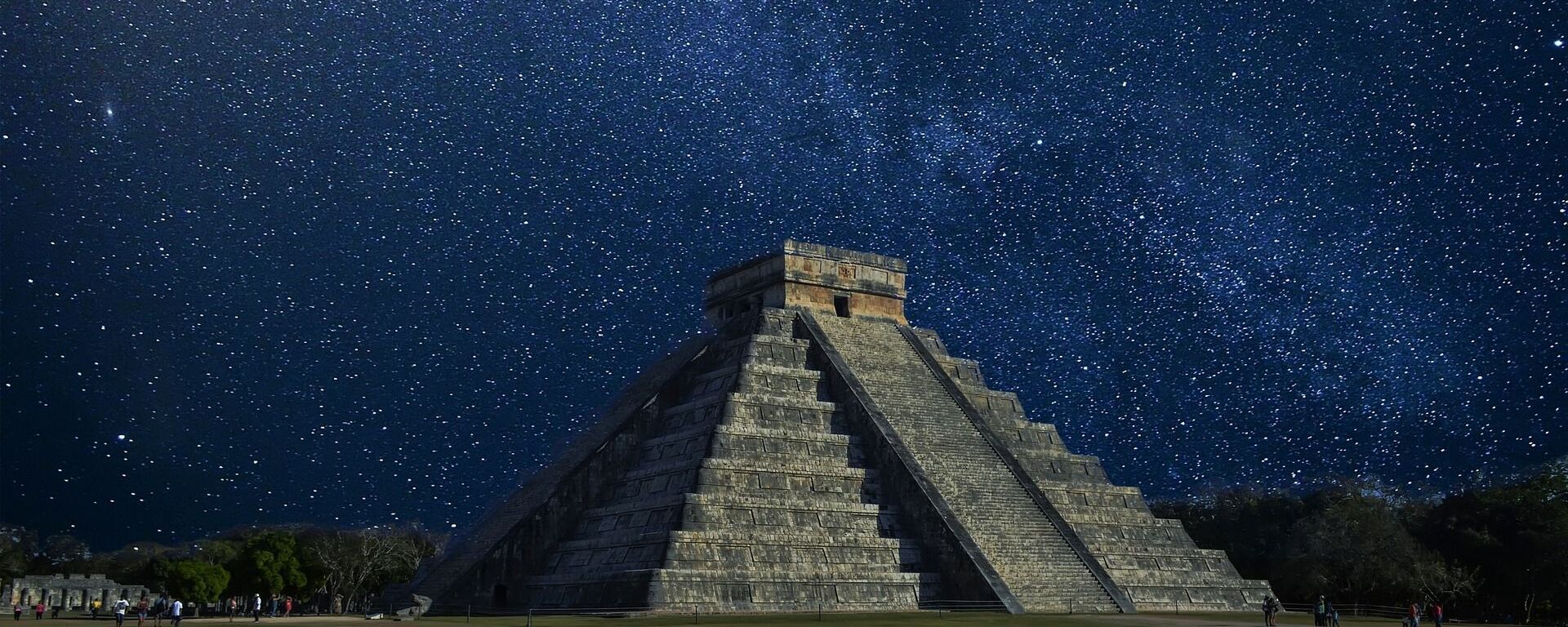https://sputnikglobe.com/20231104/photo-archaeologists-uncover-ancient-mayan-temple-in-mexicos-yucatan-peninsula-1114705204.html
Photo: Archaeologists Uncover Ancient Mayan Temple in Mexico's Yucatan Peninsula
Photo: Archaeologists Uncover Ancient Mayan Temple in Mexico's Yucatan Peninsula
Sputnik International
An ancient Mayan Temple dating back to 1000 to 1200 CE was found in the Yucatan Peninsula in Mexico, revealing more about the ancient empire.
2023-11-04T00:16+0000
2023-11-04T00:16+0000
2023-11-04T00:15+0000
beyond politics
science & tech
mexico
society
yucatan peninsula
archeology
mayans
maya
history
https://cdn1.img.sputnikglobe.com/img/07e7/04/10/1109569641_0:130:557:443_1920x0_80_0_0_8ac9864386e5ef3cccd32ed9e7cf5741.png
Archeologists in Mexico have found a roughly 1,000-year-old ancient Mayan temple in El Tigre, an archaeological site in the Yucatan Peninsula.Dating back to 1000 to 1200 AD, the circular structure has two levels and was likely capped with a flat roof. Archeologists believe it was dedicated to the Mayan serpent deity Kukulcan, one of four major deities of the ancient Mayan religion.Officials further believe it may be the same temple described in the writings of Don Pablo Paxbolon, who led the Mayan people in what is now the Mexican state of Tabasco between 1575 and 1576. His writings describe four such temples in the area, each dedicated to one of the main deities.While those specific temples have not yet been found, other circular structures in the Yucatan Peninsula have been uncovered, including in Edzna, Becan, Uxmal and Chichen Itza.The Yucatan Peninsula served as one of the last settlements for the Mayans before the civilization collapsed. Its fall remains a topic of debate among experts.The discovery was made as part of a new railway, called the “Tren Maya” or Maya Train, being constructed in Mexico that will span 1,000 miles. The project has been taking special care to preserve archeological artifacts and has already uncovered a large number of discoveries since the project began. As of October 30, 2,698 structures, 249 items, 289,100 ceramic fragments and 177 partial or complete human remains have been found.The Maya train is set to begin operations in December.
https://sputnikglobe.com/20230521/game-changer--huge-network-of-ancient-mayan-cities-and-highways-could-rewrite-history-1110507955.html
mexico
yucatan peninsula
Sputnik International
feedback@sputniknews.com
+74956456601
MIA „Rossiya Segodnya“
2023
News
en_EN
Sputnik International
feedback@sputniknews.com
+74956456601
MIA „Rossiya Segodnya“
Sputnik International
feedback@sputniknews.com
+74956456601
MIA „Rossiya Segodnya“
mayan temples found, recent maya discoveries, yucatan peninsula, mexico archeology finds, maya train, tren maya
mayan temples found, recent maya discoveries, yucatan peninsula, mexico archeology finds, maya train, tren maya
Photo: Archaeologists Uncover Ancient Mayan Temple in Mexico's Yucatan Peninsula
Anthropologists and archeologists believe that the Mayan civilization started around 1500 BCE, and continued to thrive throughout Central America and southern North America until around 900 CE, but the civilization continued to thrive in the Yucatan Peninsula for centuries longer, with its last city falling to the Spanish in 1697.
Archeologists in Mexico have found a roughly 1,000-year-old ancient Mayan temple in El Tigre, an archaeological site in the Yucatan Peninsula.
Dating back to 1000 to 1200 AD, the circular structure has two levels and was likely capped with a flat roof. Archeologists believe it was dedicated to the Mayan serpent deity Kukulcan, one of four major deities of the ancient Mayan religion.
Officials further believe it may be the same temple described in the writings of Don Pablo Paxbolon, who led the Mayan people in what is now the Mexican state of Tabasco between 1575 and 1576. His writings describe four such temples in the area, each dedicated to one of the main deities.
While those specific temples have not yet been found, other circular structures in the Yucatan Peninsula have been uncovered, including in Edzna, Becan, Uxmal and Chichen Itza.
“This building broadens our knowledge of the late occupation of El Tigre,” Diego Prieto Hernández, an anthropologist and director general of the National Institute of Anthropology and History, said during an Oct. 30 conference, as quoted in Mexican media. “Circular structures generally correspond to the early Postclassic period between A.D. 1000 and 1200, when the Maya zone had links with other regions of Mesoamerica, in particular with central Mexico, Oaxaca and the Gulf Coast.”
The Yucatan Peninsula served as one of the last settlements for the Mayans before the civilization collapsed. Its fall remains a topic of debate among experts.
The discovery was made as part of a new railway, called the “Tren Maya” or Maya Train, being constructed in Mexico that will span 1,000 miles. The project has been taking special care to preserve archeological artifacts and has already uncovered a large number of discoveries since the project began. As of October 30, 2,698 structures, 249 items, 289,100 ceramic fragments and 177 partial or complete human remains have been found.
The Maya train is set to begin operations in December.




